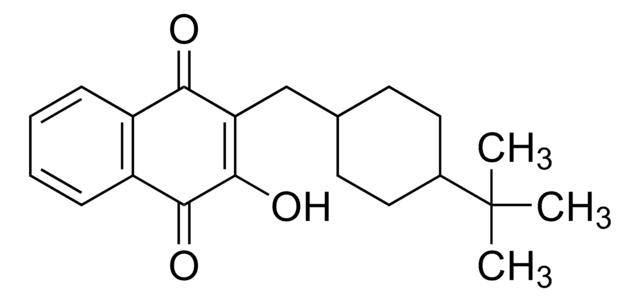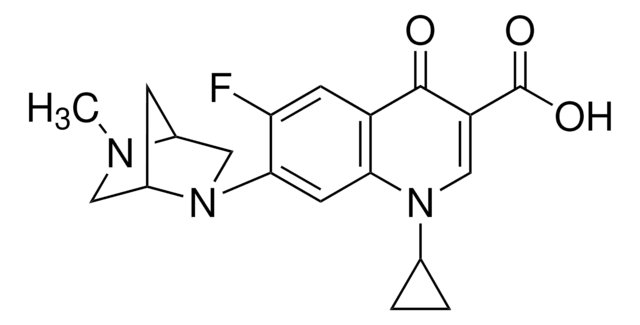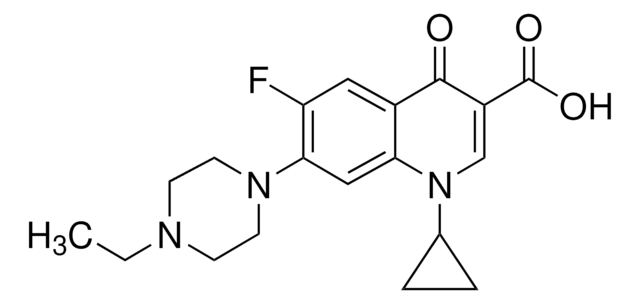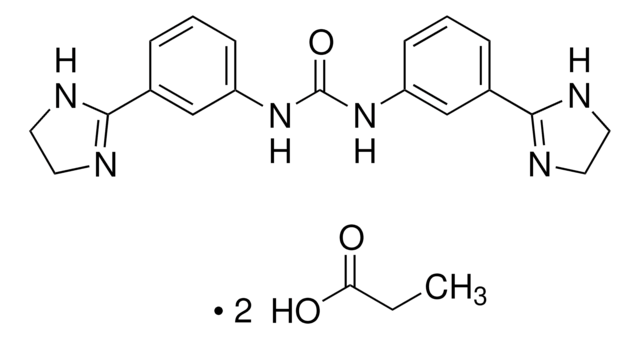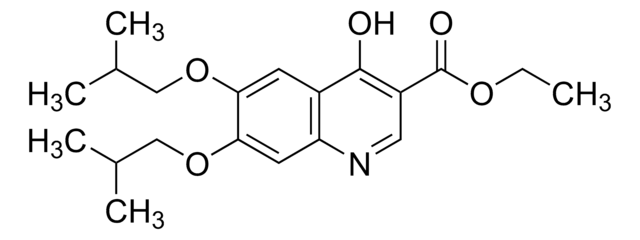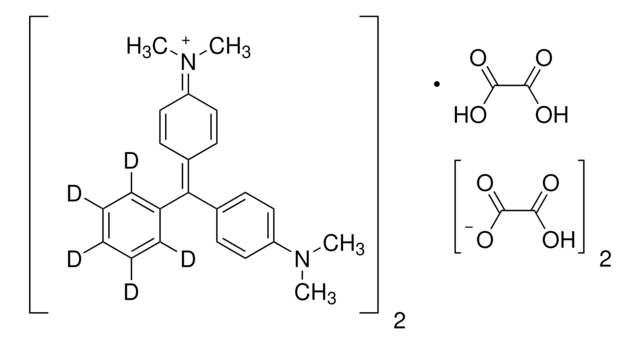32154
Buparvaquone
VETRANAL®, analytical standard
Synonim(y):
2-[(4-tert-Butylcyclohexyl)methyl]-3-hydroxy-1,4-naphthoquinone, 2-[[4-(1,1-Dimethylethyl)cyclohexyl]methyl]-3-hydroxy-1,4-naphthalenedione
About This Item
Polecane produkty
klasa czystości
analytical standard
Poziom jakości
linia produktu
VETRANAL®
metody
HPLC: suitable
gas chromatography (GC): suitable
Zastosowanie
forensics and toxicology
veterinary
format
neat
temp. przechowywania
2-8°C
ciąg SMILES
CC(C)(C)C1CCC(CC1)CC2=C(O)C(=O)c3ccccc3C2=O
InChI
1S/C21H26O3/c1-21(2,3)14-10-8-13(9-11-14)12-17-18(22)15-6-4-5-7-16(15)19(23)20(17)24/h4-7,13-14,24H,8-12H2,1-3H3
Klucz InChI
KLLIVCPQDTYMLC-UHFFFAOYSA-N
Szukasz podobnych produktów? Odwiedź Przewodnik dotyczący porównywania produktów
Zastosowanie
Informacje prawne
Kod klasy składowania
11 - Combustible Solids
Klasa zagrożenia wodnego (WGK)
WGK 3
Temperatura zapłonu (°F)
Not applicable
Temperatura zapłonu (°C)
Not applicable
Wybierz jedną z najnowszych wersji:
Masz już ten produkt?
Dokumenty związane z niedawno zakupionymi produktami zostały zamieszczone w Bibliotece dokumentów.
Nasz zespół naukowców ma doświadczenie we wszystkich obszarach badań, w tym w naukach przyrodniczych, materiałoznawstwie, syntezie chemicznej, chromatografii, analityce i wielu innych dziedzinach.
Skontaktuj się z zespołem ds. pomocy technicznej